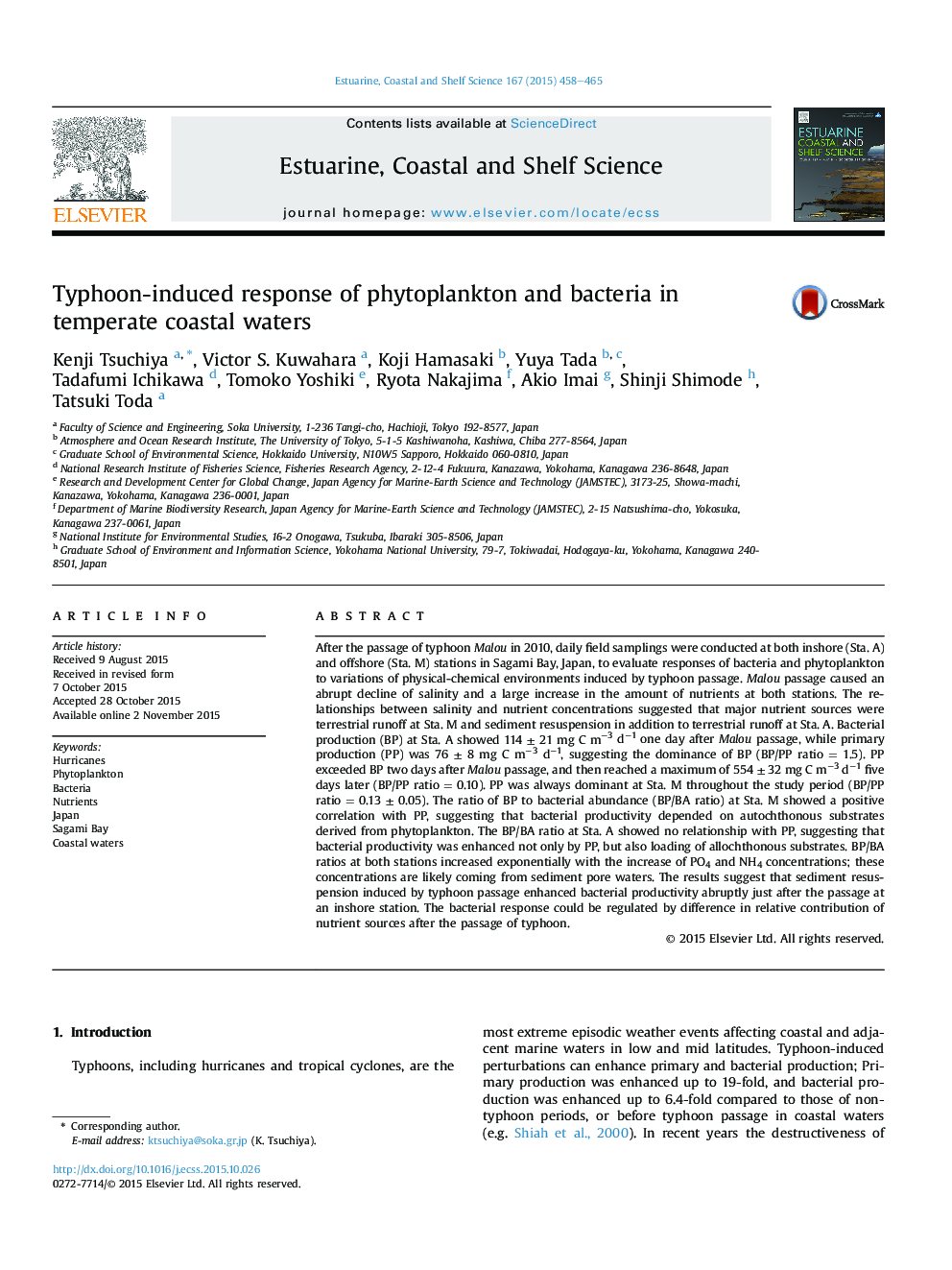| کد مقاله | کد نشریه | سال انتشار | مقاله انگلیسی | نسخه تمام متن |
|---|---|---|---|---|
| 4539345 | 1326591 | 2015 | 8 صفحه PDF | دانلود رایگان |
After the passage of typhoon Malou in 2010, daily field samplings were conducted at both inshore (Sta. A) and offshore (Sta. M) stations in Sagami Bay, Japan, to evaluate responses of bacteria and phytoplankton to variations of physical-chemical environments induced by typhoon passage. Malou passage caused an abrupt decline of salinity and a large increase in the amount of nutrients at both stations. The relationships between salinity and nutrient concentrations suggested that major nutrient sources were terrestrial runoff at Sta. M and sediment resuspension in addition to terrestrial runoff at Sta. A. Bacterial production (BP) at Sta. A showed 114 ± 21 mg C m−3 d−1 one day after Malou passage, while primary production (PP) was 76 ± 8 mg C m−3 d−1, suggesting the dominance of BP (BP/PP ratio = 1.5). PP exceeded BP two days after Malou passage, and then reached a maximum of 554 ± 32 mg C m−3 d−1 five days later (BP/PP ratio = 0.10). PP was always dominant at Sta. M throughout the study period (BP/PP ratio = 0.13 ± 0.05). The ratio of BP to bacterial abundance (BP/BA ratio) at Sta. M showed a positive correlation with PP, suggesting that bacterial productivity depended on autochthonous substrates derived from phytoplankton. The BP/BA ratio at Sta. A showed no relationship with PP, suggesting that bacterial productivity was enhanced not only by PP, but also loading of allochthonous substrates. BP/BA ratios at both stations increased exponentially with the increase of PO4 and NH4 concentrations; these concentrations are likely coming from sediment pore waters. The results suggest that sediment resuspension induced by typhoon passage enhanced bacterial productivity abruptly just after the passage at an inshore station. The bacterial response could be regulated by difference in relative contribution of nutrient sources after the passage of typhoon.
Journal: Estuarine, Coastal and Shelf Science - Volume 167, Part B, 20 December 2015, Pages 458–465
